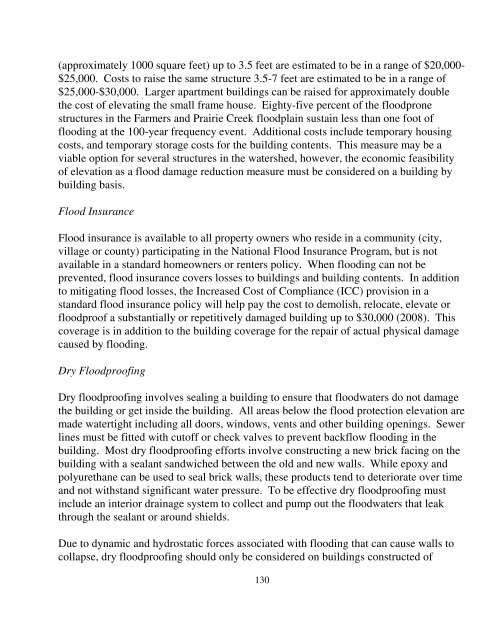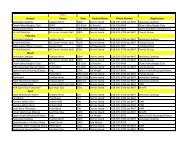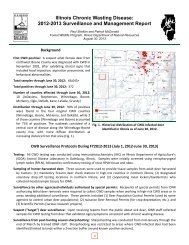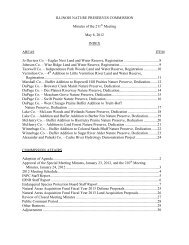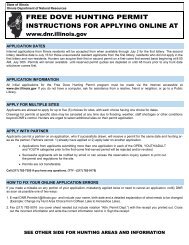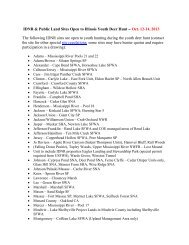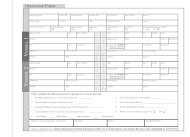Create successful ePaper yourself
Turn your PDF publications into a flip-book with our unique Google optimized e-Paper software.
(approximately 1000 square feet) up to 3.5 feet are estimated to be in a range <strong>of</strong> $20,000-$25,000. Costs to raise the same structure 3.5-7 feet are estimated to be in a range <strong>of</strong>$25,000-$30,000. Larger apartment buildings can be raised for approximately doublethe cost <strong>of</strong> elevating the small frame house. Eighty-five percent <strong>of</strong> the floodpronestructures in the Farmers and Prairie Creek floodplain sustain less than one foot <strong>of</strong>flooding at the 100-year frequency event. Additional costs include temporary housingcosts, and temporary storage costs for the building contents. This measure may be aviable option for several structures in the watershed, however, the economic feasibility<strong>of</strong> elevation as a flood damage reduction measure must be considered on a building bybuilding basis.Flood InsuranceFlood insurance is available to all property owners who reside in a community (city,village or county) participating in the National Flood Insurance Program, but is notavailable in a standard homeowners or renters policy. When flooding can not beprevented, flood insurance covers losses to buildings and building contents. In additionto mitigating flood losses, the Increased Cost <strong>of</strong> Compliance (ICC) provision in astandard flood insurance policy will help pay the cost to demolish, relocate, elevate orfloodpro<strong>of</strong> a substantially or repetitively damaged building up to $30,000 (2008). Thiscoverage is in addition to the building coverage for the repair <strong>of</strong> actual physical damagecaused by flooding.Dry Floodpro<strong>of</strong>ingDry floodpro<strong>of</strong>ing involves sealing a building to ensure that floodwaters do not damagethe building or get inside the building. All areas below the flood protection elevation aremade watertight including all doors, windows, vents and other building openings. Sewerlines must be fitted with cut<strong>of</strong>f or check valves to prevent backflow flooding in thebuilding. Most dry floodpro<strong>of</strong>ing efforts involve constructing a new brick facing on thebuilding with a sealant sandwiched between the old and new walls. While epoxy andpolyurethane can be used to seal brick walls, these products tend to deteriorate over timeand not withstand significant water pressure. To be effective dry floodpro<strong>of</strong>ing mustinclude an interior drainage system to collect and pump out the floodwaters that leakthrough the sealant or around shields.Due to dynamic and hydrostatic forces associated with flooding that can cause walls tocollapse, dry floodpro<strong>of</strong>ing should only be considered on buildings constructed <strong>of</strong>130


